The lack of a centerstand makes many routine maintenance chores very difficult on a cruiser. Otherwise simple tasks like wheel cleaning can become major chores. That's why many owners purchase lifts, which are basically support structures raised by hydraulic jacks that lift both wheels off the floor. But lifts have traditionally been expensive. When we rounded up a selection for our August '97 issue, the most-affordable one was $325. (More recently, we have seen a motorcycle lift sold through Sam's Club for $80, but have not used it.) Now Sears' Craftsman tool division has introduced a very affordable hydraulic-jack-operated lift, the No. 00950190000 Motorcycle/ATV Jack. The standard price is $120, but we found it on sale for $100 in June 2002 from the Sears website and saw it in one of the flyers from Craftman Club (a free Craftsman Tool affinty club with discounts) for under $90 a couple of months later. Ordering from the website allows you to have it shipped or pick it up at a Sears store.
The Motorcycle Jack requires a small amount of clearly explained assembly, requiring less than 10 minutes and a 14mm wrench. Once assembled, the 90-pound Jack wheels around on four casters, steered by the T-handle that extends up from the Jack. To lift a bike without any adjustments, the bike must have a more-or-less flat area under the engine. A pipe that passes under the engine or other projection that keeps the bike from resting flat on the two rubber-padded 2.7-by-13.0-inch rails set 8.3 inches apart will require the addition of blocks or shims. Some Harley Dynas or other bikes with stands that get in the way may not lift without some adjustment. However, all the cruisers we tried it under rested steadily with the frame rails resting on the rubber pads. The above dimensions should permit you to determine of your bike will fit.
Jacking a bike requires a flat, solid floor or driveway. Roll the 5.1-inch-high Jack under the bike from the right using the large handle. Once positioned under solid support points, raise the Jack's support platform using the foot pedal, while steadying the bike by holding the handlebar. As the platform rises, a ratcheting safety catch offers positive stops at 11.8, 14.5 and 16.5 inches off the floor. That's about average for maximum lift height among the lifts we have tried, some of which go as high as 21.8 inches, and plenty for most chores, including wheel removal from virtually all rear fenders. The Jack's rails may block access to the drain plug on some bikes, however. If the hydraulics fail, the safety catch keeps the bike from dropping. If you are going to remove a wheel, which might unbalance the bike, or perform some vigorous wrenching, use the two included ratcheting tie-down straps to secure the bike to the jack. Some bikes barely balance on the jack and tying them down before lifting is a good idea too. If you don't want the jack to roll around, there are screw-type brakes to lock it in place, or you can move the Jack around with the bike aboard. Maximum capacity is rated at 1500 pounds, 100 pounds more than the max-rated lift we have tried previously. To lower the Jack, pump the lift pedal once or twice to disengage the safety catch, then press the release pedal, which gently drops the bike back to the floor.
The Craftsman Motorcycle/ATV Jack should be a real boon for any cruiser owner who does his own maintenance. You can now get a real, nicely made hydraulic lift for a bit more than you'd pay for a simple short-lift simple leverage-type stand. It carries a one-year warranty. For additional information, see www.craftsman.com and search for "motorcycle jack." Joining the Craftsman Club may allow you to buy it for less if your timing is right.
To find more evaluations and comparisons of motorcycle gear and accessories, see the Accessories and Gear section of MotorcycleCruiser.com.
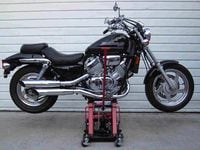
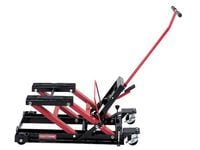
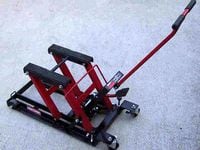
/cloudfront-us-east-1.images.arcpublishing.com/octane/OQVCJOABCFC5NBEF2KIGRCV3XA.jpg)
/cloudfront-us-east-1.images.arcpublishing.com/octane/F3O2DGLA4ZBDJGNVV6T2IUTWK4.jpg)
/cloudfront-us-east-1.images.arcpublishing.com/octane/ZXYQE3MHLFDSPKNGWL7ER5WJ4U.jpg)
/cloudfront-us-east-1.images.arcpublishing.com/octane/RDF24VM7WVCOBPIR3V3R4KS63U.jpg)
/cloudfront-us-east-1.images.arcpublishing.com/octane/W7RSIBFISNHJLIJESSWTEBTZRQ.jpg)
/cloudfront-us-east-1.images.arcpublishing.com/octane/AERA26ENRNBW3K324YWCPEXYKM.jpg)
/cloudfront-us-east-1.images.arcpublishing.com/octane/YWX3YX7QBBHFXFDMEEEKRG4XJE.jpg)
/cloudfront-us-east-1.images.arcpublishing.com/octane/I7OKI53SZNDOBD2QPXV5VW4AR4.jpg)
/cloudfront-us-east-1.images.arcpublishing.com/octane/IH52EK3ZYZEDRD3HI3QAYOQOQY.jpg)
/cloudfront-us-east-1.images.arcpublishing.com/octane/K2FSAN7OWNAXRJBY32DMVINA44.jpg)
/cloudfront-us-east-1.images.arcpublishing.com/octane/G4XK7JL24FCUTKLZWUFVXOSOGE.jpg)
/cloudfront-us-east-1.images.arcpublishing.com/octane/JJNXVAC27ZCDDCMTHTQZTHO55Y.jpg)





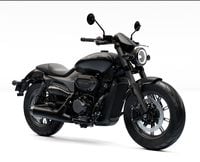

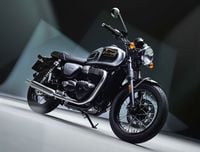


/cloudfront-us-east-1.images.arcpublishing.com/octane/3VSTLPKOHNFTRJTIAAXDPGCPA4.jpg)
